The key differentiating feature in Scrite is the Structure Tab. It is in this tab you can visually map your screenplay and construct the flow of your story.
With 0.4.14, we have added a new feature in the Structure Tab called Annotations. We believe that a lot of users will find it really interesting.
Let’s first start by looking at what exactly the Structure tab has to offer in terms of being able to (surprise!!) capture the structure of your screenplay.
What exactly is Structure?
Many well known and hugely respected screenwriters rely heavily on structure. Rian Johnson, writer and director of Knives Out, says:
“I write really structurally. I spend the first big chunk of time working in little notebooks and all I do is write arcs and split them out into sequences. I need to be able to see the whole plot in my head before I can actually start writing.“
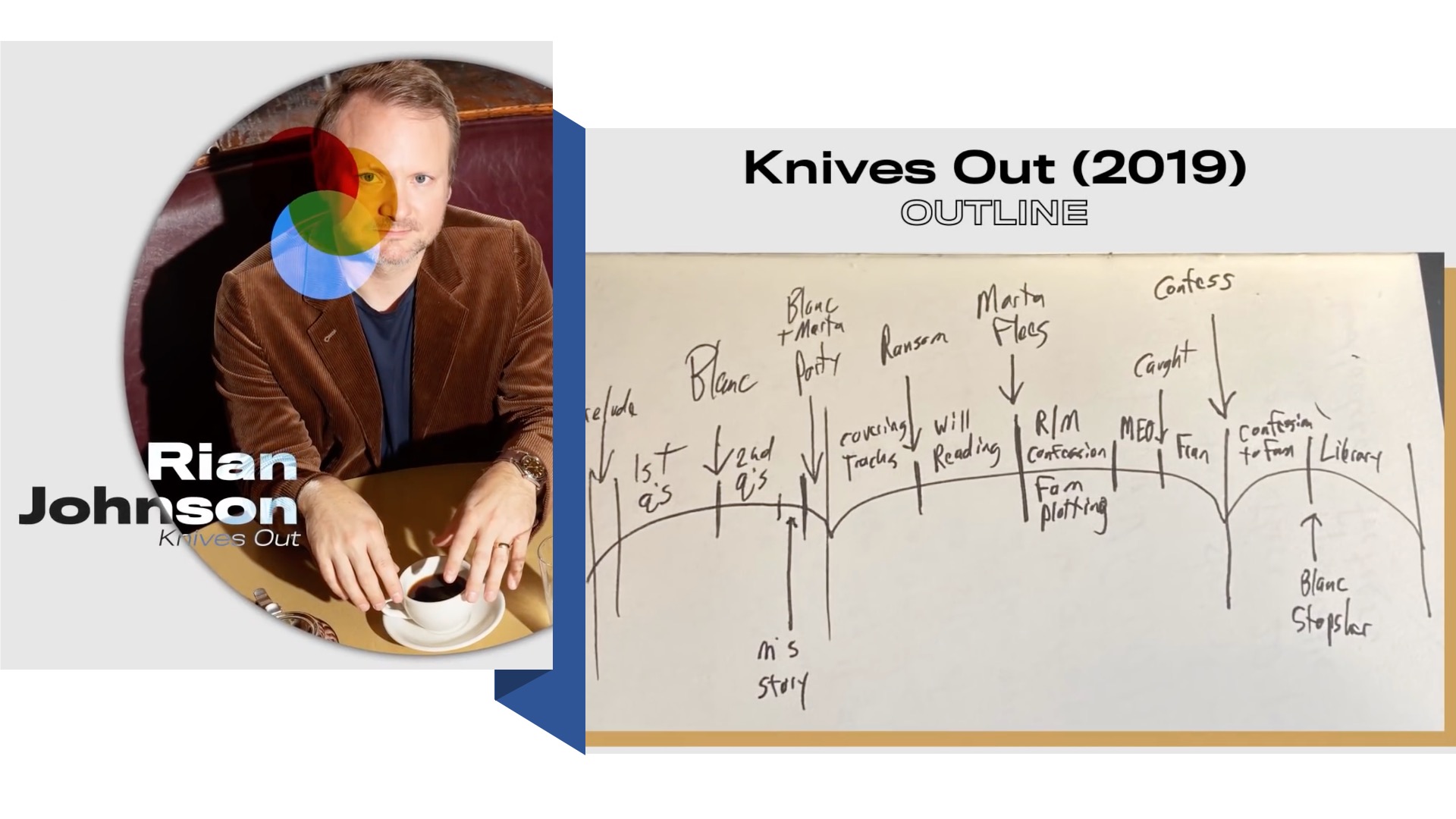
Quentin Tarantino prefers to map out the story up until the middle, but then he lets his characters and the world of his story dictate what happens from there after. He prefers to work with an outline like this.
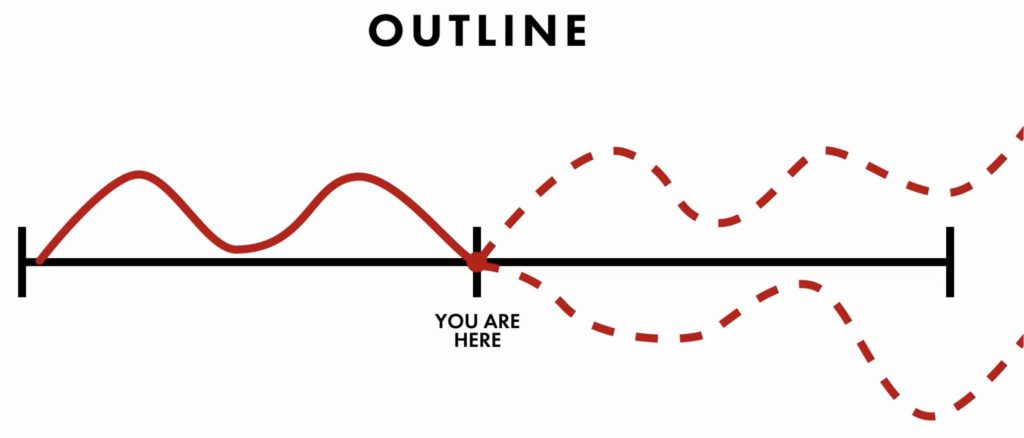
We highly recommend that you watch this video where many writers have shared their screenwriting secrets and attribute much of their success to the structure of their screenplays.
Many writers swear by the 3 act structure, where there are three distinct parts of the screenplay
- Act I or the Setup phase, where the characters and their world is setup. It is in this phase that an inciting incident happens triggering the first plot-point of the story.
- Act II or the Confrontation phase, where the “hero” of the story confronts the enemy, fights the odds and heads towards the second plot twist of the story.
- Act III or the Resolution phase, which is primarily driven by the second plot point (or twist) that catapults the “hero” towards the resolution of his/her conflict.
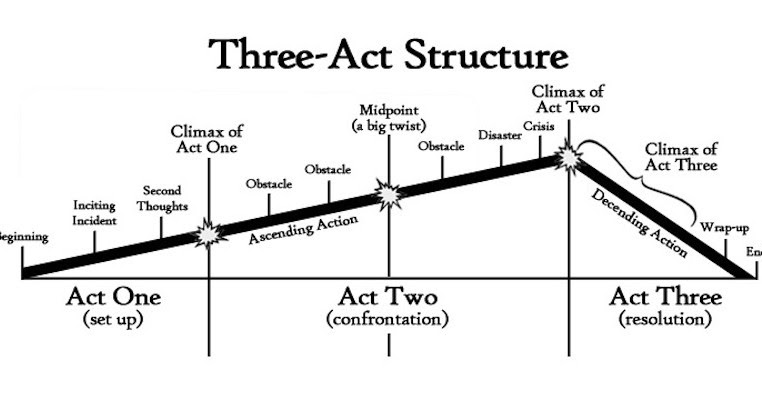
One can hardly write about screenplay structures and not mention Christopher Nolan. He is a master of non-linear story telling. One of his all time best films is Memento and there is an entire YouTube video where he explains the non-linear structure of that film.
While there are many structures possible, they essentially boil down to how the various elements of your screenplay are pieced together to make a stream of scenes.
Capturing Structure in Scrite
Scrite always provided a way for writers to capture the flow of scenes in their screenplay in a visual form.
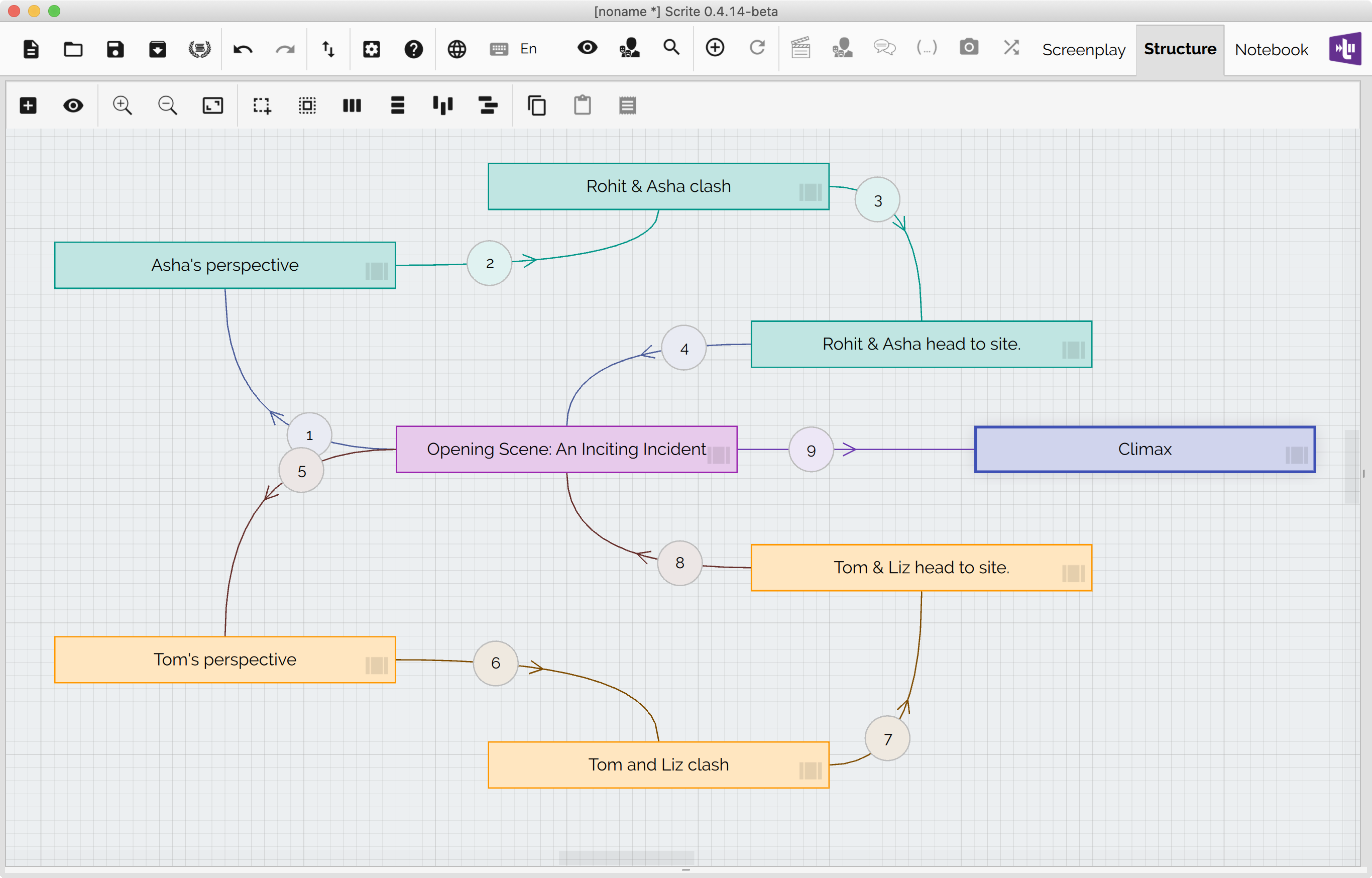
With 0.4.14, Scrite now offers a way for writers to add annotations to their screenplays and make it rich in visual form.
For example, let’s say you wanted to map your scenes on a 3-Act-Structure skeleton. You can now start a new screenplay, click on the plus button on the top left of the structure tab and add horizontal and vertical lines to create the 3-Act-Structure space for your scenes.
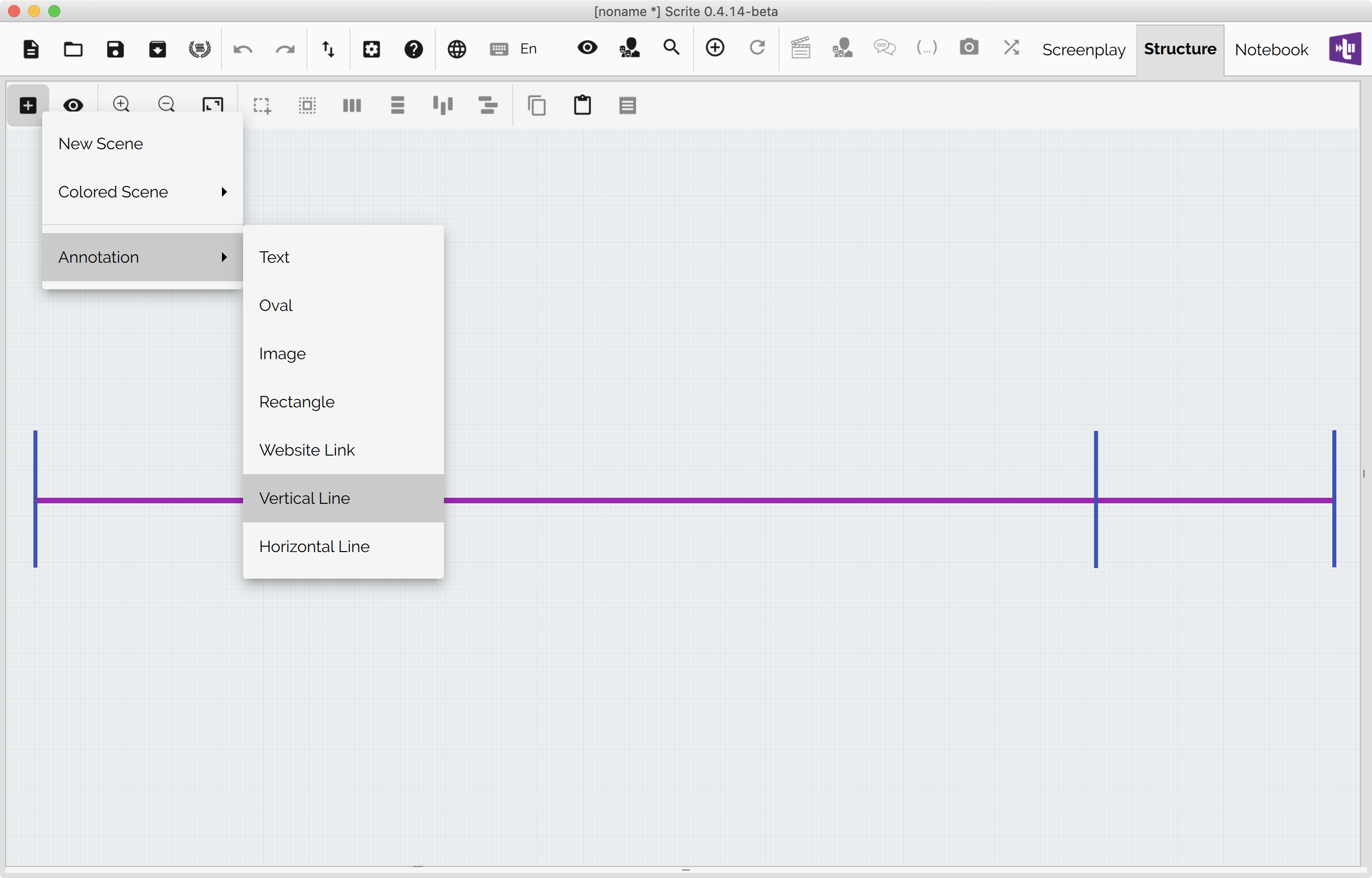
You can go ahead and add text annotations to mark various spaces in your 3-Act-Structure.
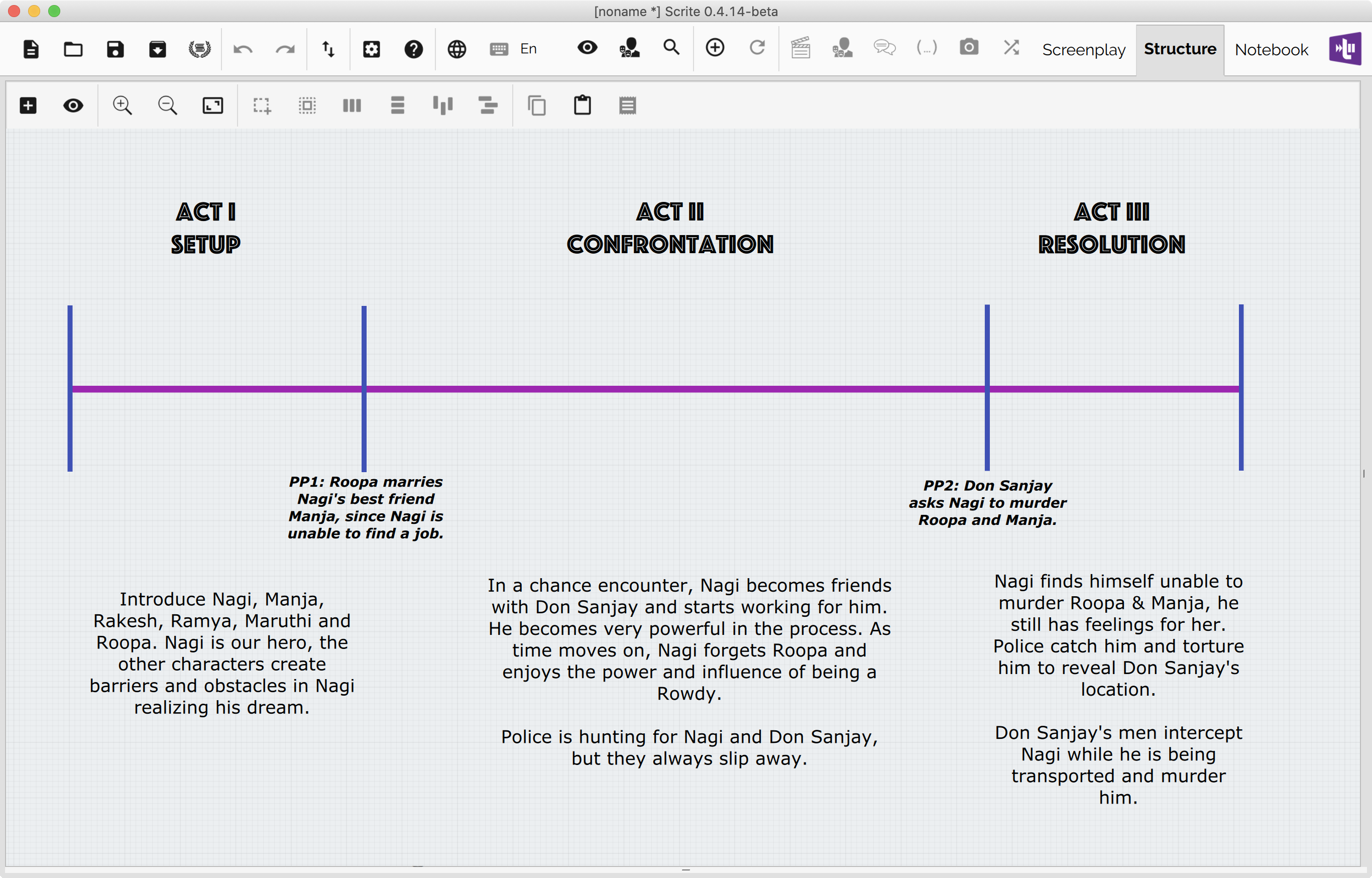
Now that the structure is ready, you can fill up the space with scenes that bring-to-life the overall plot as captured by the structure.
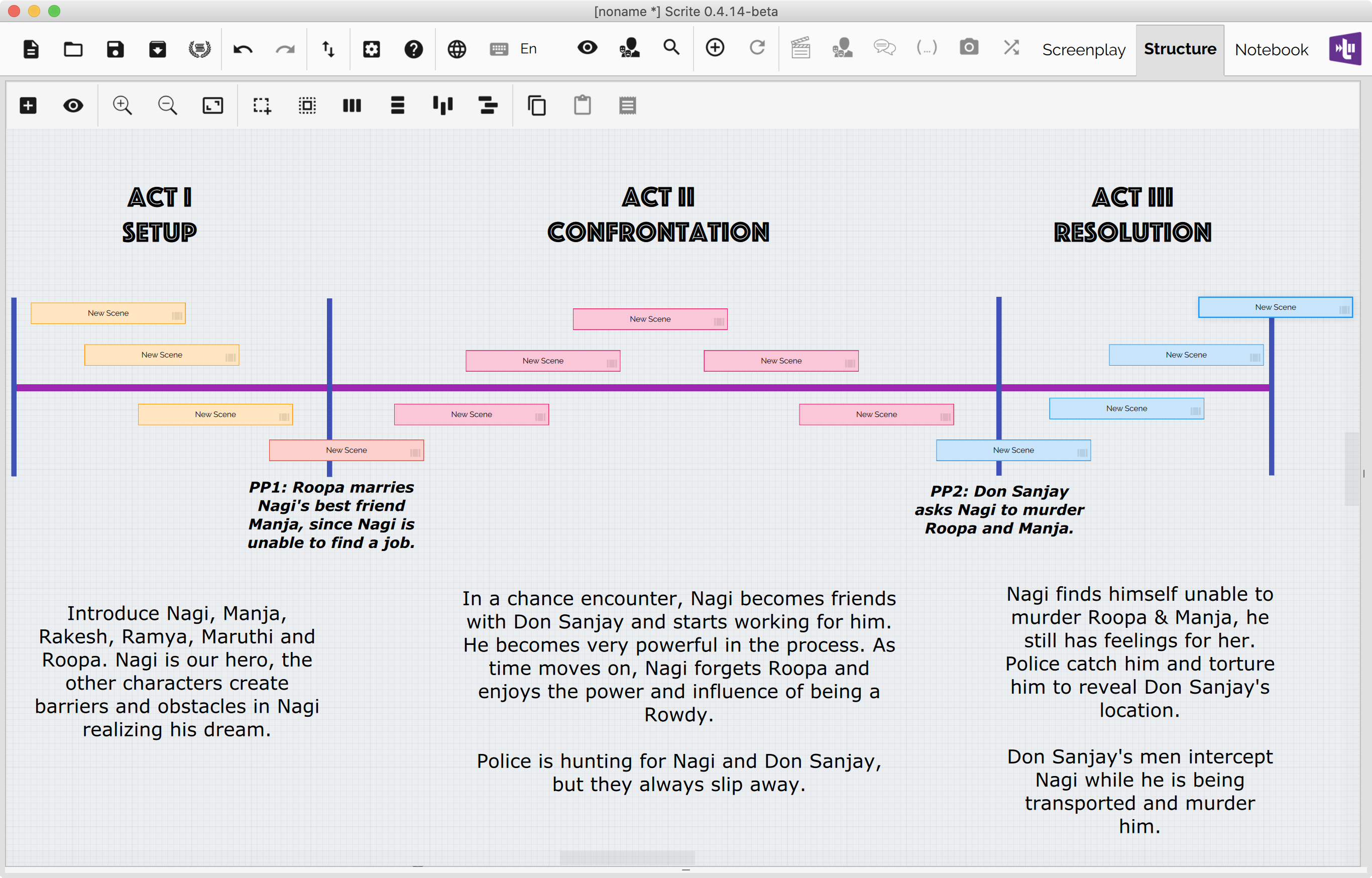
Once all the scenes have been created, you can either drag and drop scenes into the timeline or select them all and add them to the timeline at once.
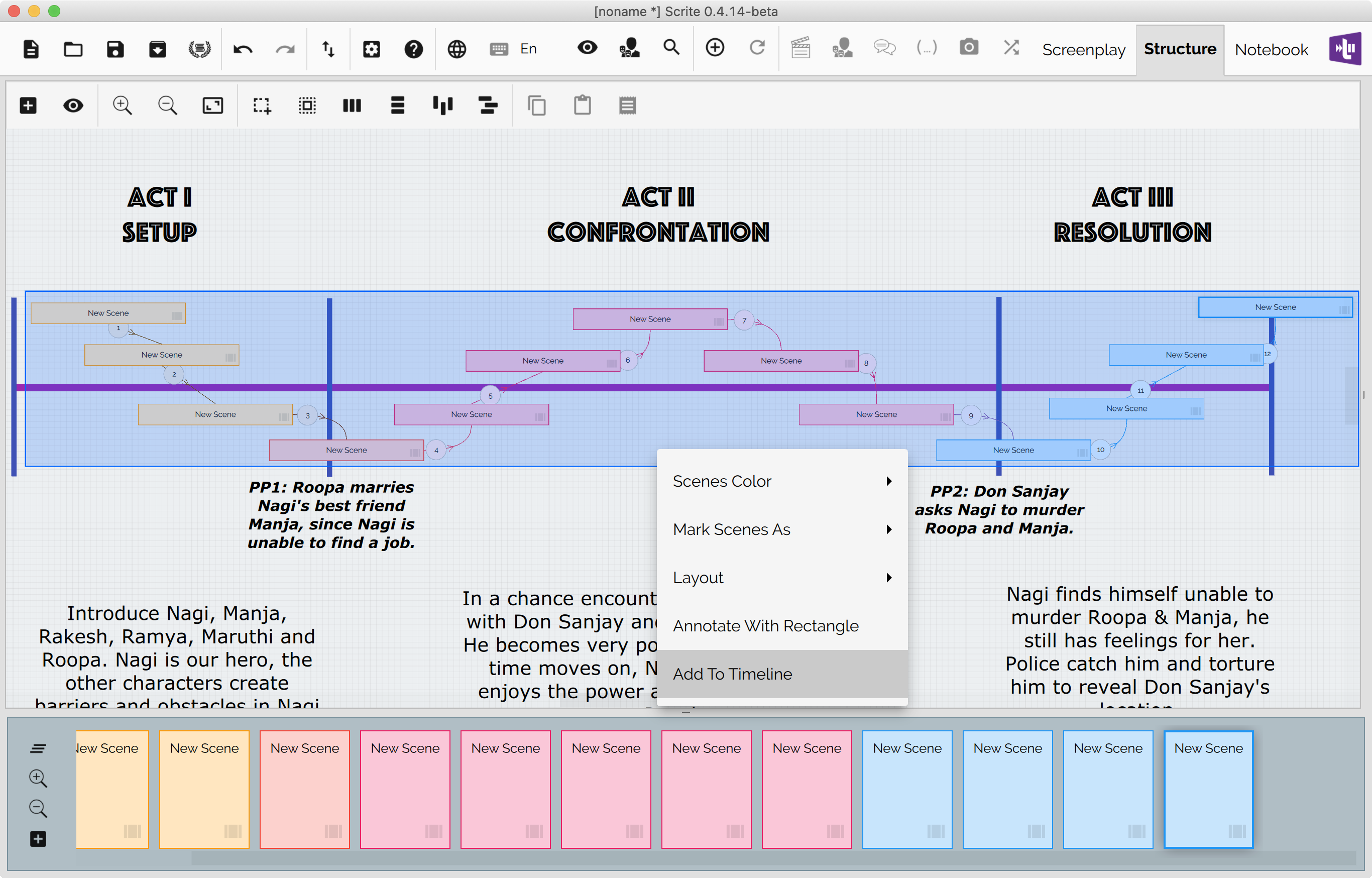
Once you have the skeleton of your screenplay worked out, you can now go ahead and fill in the content of each scene to craft your screenplay.
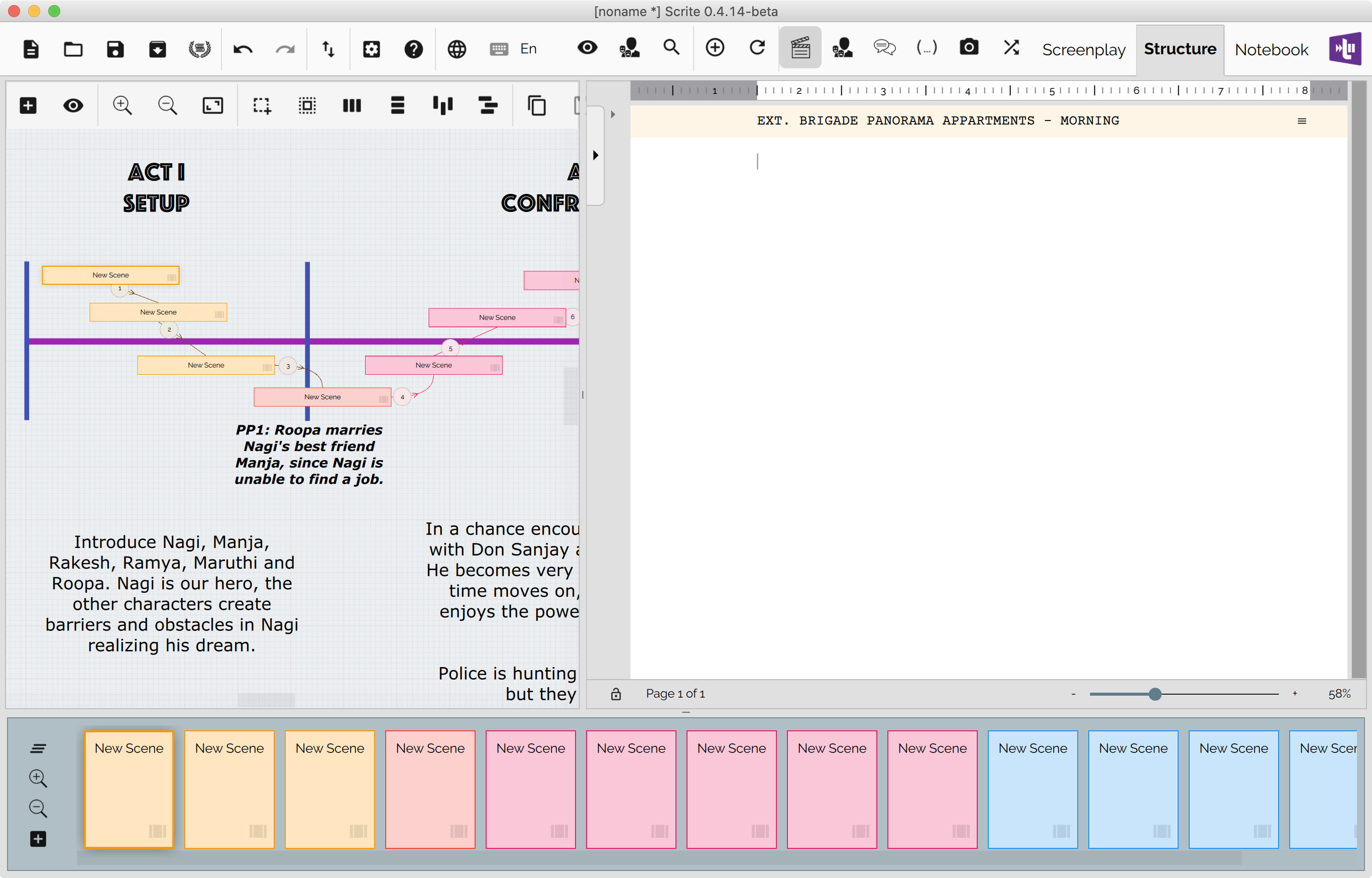
As you add new scenes, you can place them in their appropriate place on the structure and include them into the screenplay.
You can even include image and website links as annotations in your structure to compile any research or references you want.
We believe that the Annotations feature in Scrite will aid visual thinkers to capture their screenplay structure in a much better way than they could do before.
What’s more, you can now explore the structure tab – together with all annotations into a PDF and share it with others as well.
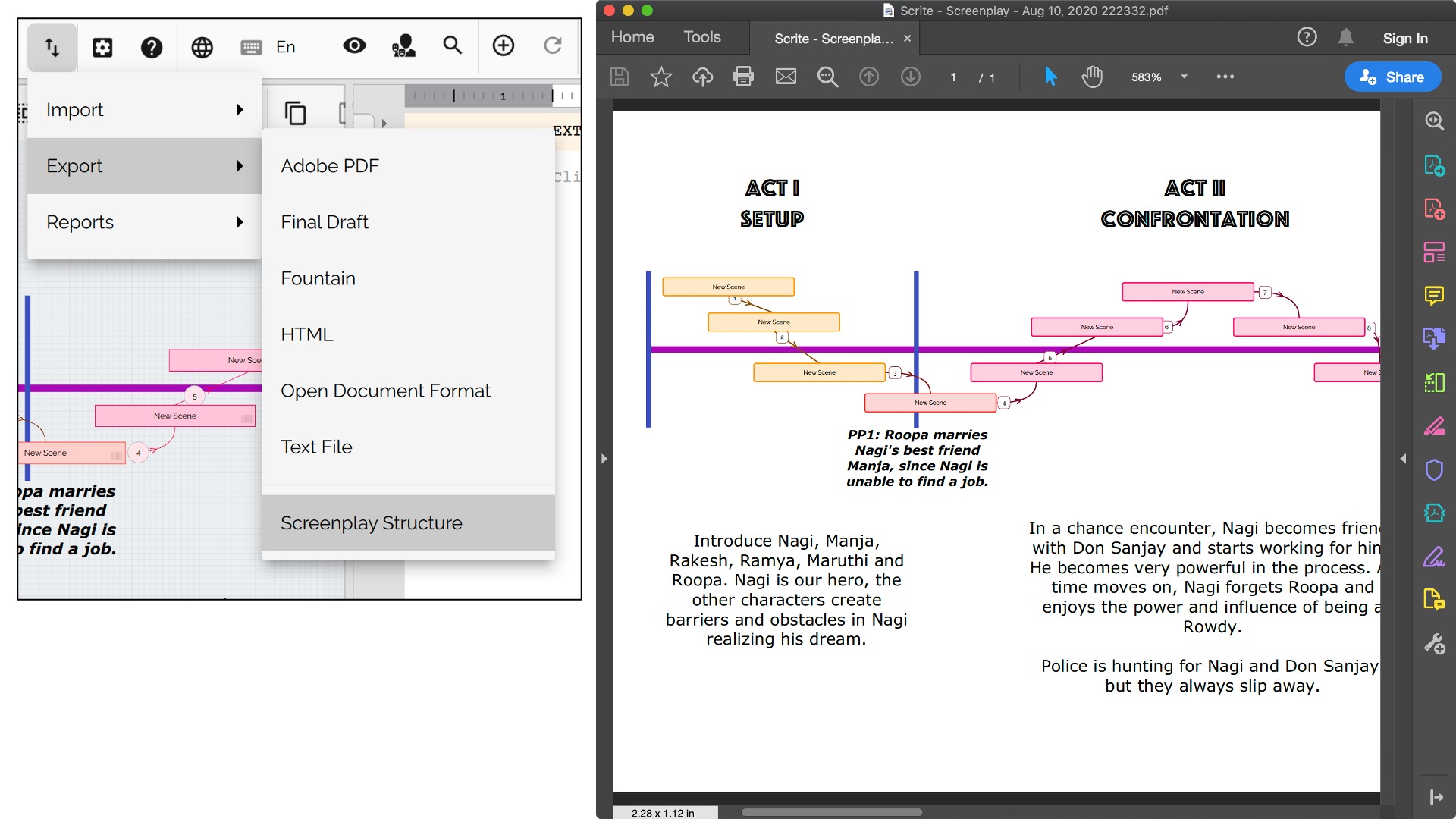
Install or update to 0.4.14-beta and try out this feature. Let us know what you think.